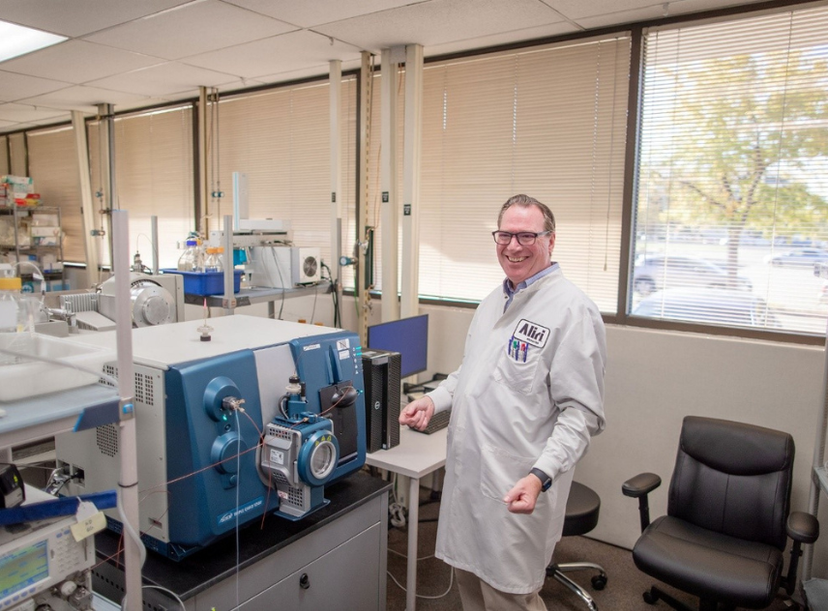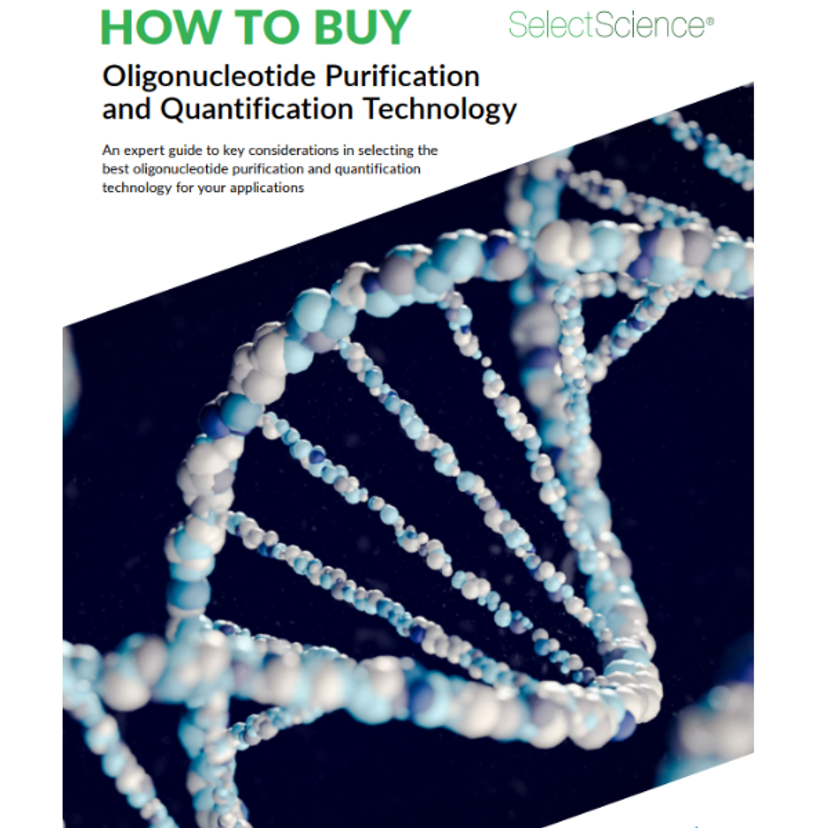Charting the future of oligonucleotide bioanalysis
As oligonucleotide therapeutics reshape drug discovery, AAPS is leading a collaborative effort to establish robust bioanalytical strategies
13 Jun 2025Oligonucleotide-based drug development has gained significant momentum over the past decade, and for good reason. Traditional small-molecule drugs primarily target proteins, of which only 10 percent are considered ‘druggable’. In contrast, oligonucleotides – short strands of DNA or RNA – act upstream at the genetic level. By binding to complementary RNA sequences within cells, oligos can modulate gene expression or trigger targeted RNA degradation. This approach opens the door to targeting nearly any protein-coding gene and tackling diseases previously deemed untreatable.
Since the approval of Fomivirsen in 1998, the U.S. Food and Drug Administration has approved over 20 oligonucleotide-based therapies, targeting a range of rare genetic, metabolic, and infectious diseases. With more than 1500 candidates currently in the clinical pipeline – and an expanding diversity of modes of action – there is a pressing need to develop and validate robust bioanalytical tools to support pharmacokinetic, drug metabolism, and biodistribution studies for oligonucleotide therapies.
The Oligonucleotide Bioanalysis Discussion Group

Troy Voelker, Senior Lab Director at Aliri’s Salt Lake facility
Recognizing this need, the American Association of Pharmaceutical Scientists (AAPS) recently launched the Oligonucleotide Bioanalysis Discussion Group – a global forum uniting researchers, CROs, and pharmaceutical developers to define and standardize best practices in oligonucleotide bioanalysis.
A key member of this initiative is Aliri Bioanalysis, a CRO with over 20 years of experience in oligonucleotide therapeutic development and analysis.
“Our main focus is on short oligos, including antisense oligonucleotides (ASOs), small interfering RNAs (siRNAs), and peptide-conjugated phosphorodiamidate morpholino oligomers (PPMOs),” explains Troy Voelker, Senior Lab Director at Aliri’s Salt Lake facility. “We’ve been a part of the Oligonucleotide Bioanalysis Discussion Group for over a year and a half, and our aim is to align pharma and CROs on how oligo therapeutics can be analyzed.”
Harmonizing oligonucleotide bioanalysis techniques
Despite their therapeutic promise, oligonucleotides present unique analytical challenges due to their size, charge, and chemical complexity. Among available methods, liquid chromatography coupled with mass spectrometry (LC-MS) has emerged as a preferred platform, especially for siRNA-based therapies. Other widely used methods include hybridization ELISA (HELISA), LC-fluorescence, and stem-loop reverse transcription quantitative PCR (SL-RT-qPCR). More recently, several research groups have reported combining immunoprecipitation with LC-MS analysis, known as hybrid LC-MS, to improve sensitivity and specificity over traditional techniques.
“There have been some key publications, mainly from Karan Aggarwal and Long Young, focusing on LC-MS workflows that incorporate hybridization steps upfront to clean samples and boost sensitivity via mass spectrometry,” explains Voelker. “Mass spectrometry is often considered more specific than ligand-binding assays or qPCR because it directly detects the oligonucleotide itself, rather than relying on indirect detection through binding or amplification.”
“PCR and ligand-binding assays generally offer greater sensitivity, but LC-MS stands out for its specificity and its ability to detect individual metabolites alongside the parent compound,” he continues. “The key is understanding where each methodology excels.”
The ring trial

With several analytical platforms in use, one of the core objectives of the Oligonucleotide Bioanalysis Discussion Group is to compare their performance in a collaborative ring trial. The group is evaluating PCR, ligand-binding assays, and various LC-MS technologies – including triple quadrupole, quadrupole time-of-flight (QTOF), and high-resolution mass spectrometry – for oligonucleotide analysis.
“We’re aiming to standardize methodologies across different sites,” says Voelker. “For example, one team develops an LC-MS assay for an ASO and shares that protocol with other groups working on ligand-binding assays and PCR platforms. We’re going to generate invitro samples at one site, then share those samples across all sites for analysis, allowing us to compare similarities and differences in the concentrations detected.”
At Aliri, the team is focusing on ASOs, PPMOs, and a GalNAc-siRNA. “We selected these to represent both positively and negatively charged backbones, as well as single-stranded and double-stranded formats,” notes Voelker.
Choosing the right platform

For those navigating the complexities of oligonucleotide bioanalysis, Voelker and the team have contributed to a comprehensive Oligonucleotide Buying Guide, packed with top tips to help you choose the right analytical platform and optimize assay design. Learn more here.
The optimal bioanalytical assay for oligonucleotide analysis depends on several factors, including the required sensitivity and specificity. “Sensitivity is often the primary consideration,” says Voelker. “If your lower limit of quantitation (LLOQ) needs to reach picogram levels, ligand-binding assays or PCR-based approaches typically provide the necessary sensitivity. Conversely, if quantitation in the nanogram range suffices, LC-MS becomes a more practical choice.”
Within LC-MS methodologies, the choice of mass spectrometer can further impact sensitivity and specificity. Traditional triple quadrupole instruments offer robust ion detection with high sensitivity, whereas high-resolution mass spectrometers such as Orbitraps provide excellent mass accuracy but currently lag behind triple quads in sensitivity due to differences in detection mechanisms.
“In this ring trial, we've included two types of high-resolution MS – a time-of-flight (TOF) and an Orbitrap,” says Voelker. “We are almost certain that the TOFs are going to give us better sensitivity, and maybe even to the point of what we're seeing on the triple quads. It's not going to be as accurate in terms of its mass as the orbital detector, since its resolution will be a bit lower. So that's an unknown field, and we're excited to see what those results look like and explore if we need the absolute resolution of an orbital detector or if the lower resolution of a TOF will be sufficient.”
Resolution is important because oligonucleotides commonly exhibit multiple charge states and closely related metabolites, which produce overlapping signals. “That's where the high resolution pays off, because you can really separate out those interferences because you can get down to 4 decimal places in terms of your mass readout,” he adds.
Optimizing sample preparation
Sample preparation is equally vital to successful bioanalysis. Traditional methods like phenol-chloroform extraction separate nucleic acids based on charge but provide only a coarse level of purification. Solid phase extraction (SPE) methods, often relying on anion exchange, similarly separate based on charge but may not fully remove matrix interferences.
“A major focus of this ring trial is that we are not doing either of those approaches for the LC-MS component; we're taking a hybridization approach,” says Voelker.
Here, sequence-specific probes – typically locked nucleic acid (LNA) or peptide nucleic acid (PNA) probes conjugated to biotin – are hybridized to the target oligo. The resulting duplex is then captured using streptavidin-coated magnetic beads, allowing for selective extraction of the analyte from the biological matrix. This approach greatly reduces nonspecific binding and matrix effects, which are common sources of variability and sensitivity loss.
“We’re targeting the antisense or PMO strands and capturing them directly with the magnetic beads, effectively ‘fishing out’ the oligo of interest while leaving the rest of the matrix behind,” explains Voelker. “Even when we do SPE and a liquid-liquid approach, we still see matrix effects going from species to species in the same matrix. The beauty of the hybridization approach is you're leaving the matrix behind, so we don't expect to see a difference in terms of having to extract the specific ASO or PMO out of the sample, because we are literally pulling it out.”
Next steps
The ring trial is ongoing, with sample analysis scheduled in the coming months. In the interim, the team has submitted proposals to present their findings at AAPS PharmSci 360, including a dedicated symposium on oligonucleotide bioanalysis.
“This symposium will spotlight the results from these bioanalytical platforms and foster focused discussions within each modality,” Voelker explains. “For example, the LC-MS group will delve into probe design and hybridization optimization.”
Ultimately, the group plans to publish a comprehensive report summarizing the ring trial’s results. This will provide the broader oligonucleotide therapeutic community with a clear understanding of the strengths and limitations of each analytical approach. The hope is that this evolving dialogue will help drive standardization and refinement of bioanalytical methods, supporting the continued advancement of life-saving oligonucleotide therapies.
